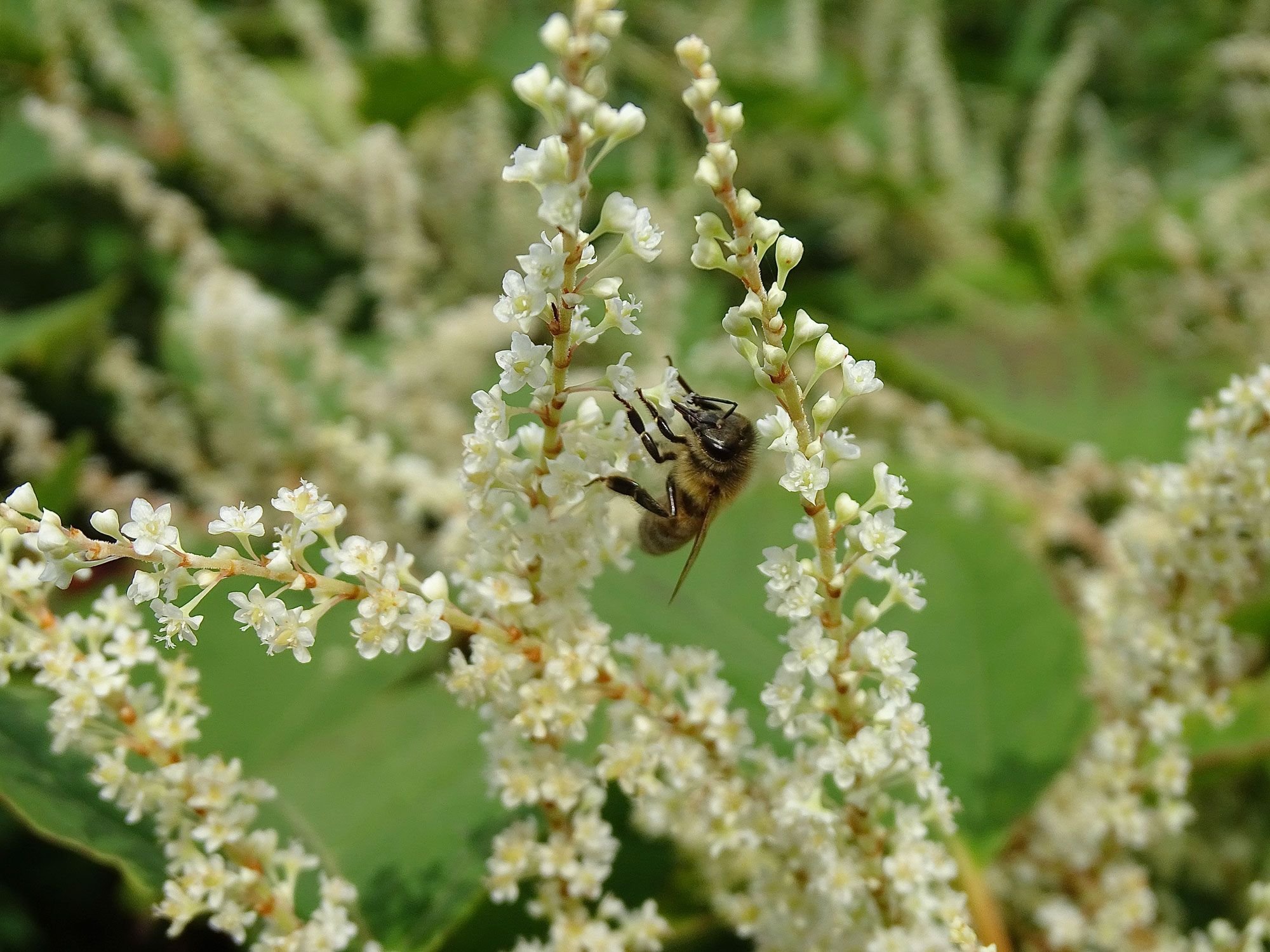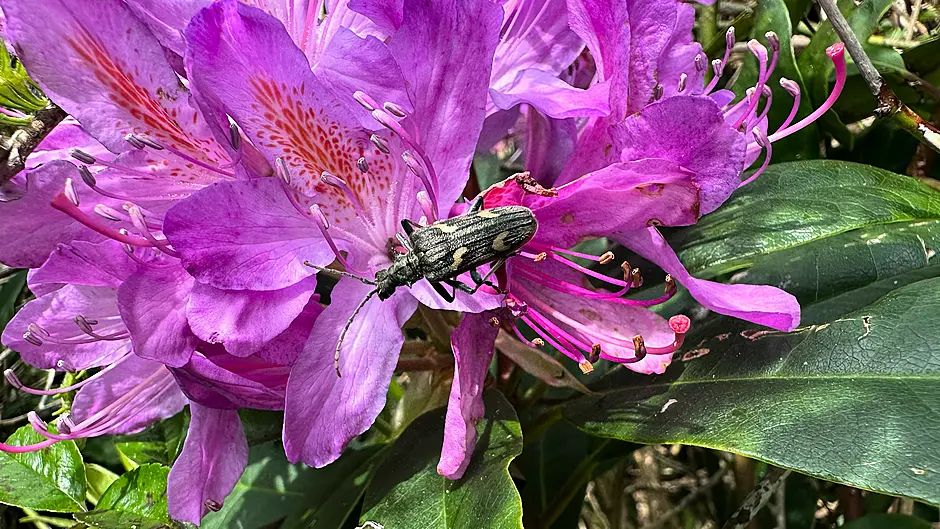BY ANN HAIGH
WHEN we think about threats to nature and biodiversity, then pollution, climate change, and land use changes typically come first to mind. However, one threat that often flies under the radar is invasive alien species.
Conservation scientists warn us that non-native invasive species are among the primary drivers of biodiversity loss worldwide. This raises the question: do most of us truly understand what they are and how they endanger our native flora and fauna?
Consider Killarney National Park, where the eye-catching rhododendron plants never fail to capture our attention. They stand out during winter when native trees have shed their leaves, with their dark green, shiny foliage, and again in summer when they flaunt their pink and purple flowers. Many admire these blooms, so how can something considered beautiful be a problem?
Native, non-native, invasive
In the context of the island of Ireland, ‘non-native’ or ‘alien’ refers to plants, animals, pathogens and other organisms that would not naturally occur here without human intervention. Species categorised as invasive have the potential to harm the economy, environment, human health, biodiversity or cause the reduction or extinction of native species. It is important to note that not all non-native species are invasive. Human activities, such as travel and trade, have introduced at least 1,280 non-native plants and animals to Ireland and there are currently 135 species listed as medium to high impact risk for invasiveness. Across Europe, the EU Commission reports over 12,000 alien species, with only around 12-15% considered invasive or likely to cause harm. According to the Intergovernmental Science-Policy Platform on Biodiversity and Ecosystem Services (IPBES) over 37,000 alien species are established worldwide, with 9.5% classified as invasive globally.
Failings
While many non-native species offer economic benefits, such as crops of maize, wheat, and non-native trees for timber, numerous other non-natives that are considered invasive are regulated by various EU laws. Ireland is obligated under these laws to implement controls and measures to manage these species. The economic impact of invasive species is significant, estimated at €12bn per year for the European economy. Notably, the European Commission recently referred Ireland to the European Court of Justice for failing to adopt and notify penalties for breaches of the Invasive Alien Species Regulation.
 A honeybee seen feeding on Japanese knotweed during the summer in Rosscarbery .
A honeybee seen feeding on Japanese knotweed during the summer in Rosscarbery .What is the issue?
Invasive species may directly impact native counterparts by preying on them, competing for resources like habitat and food, and can even hybridise with them, as seen with sika deer interbreeding with our red deer. Moreover, they may carry diseases and parasites that, while harmless to them, can be deadly if passed to our native species.
Beyond these direct impacts, invasive species can wreak havoc on ecosystems, disrupting essential services like pollination and flood control. Take Japanese knotweed and Himalayan balsam, for example. These plants invade riverbanks, outcompete native flora, and leave soil bare in winter when they die back. This may cause bank erosion and silt deposition in the river. This can damage fish spawning areas and threaten rare and protected species like the freshwater pearl mussel.
Furthermore, invasive species can alter local ecosystems, changing soil composition, habitat structure, and food chains. Consider the rhododendron, as mentioned, this often covers hills and woodlands in upland areas. It spreads easily as each plant is capable of producing up to a million seeds and it poses a particular threat to oak woodlands, bogs and heaths.
More to come
In 2017, a collaboration of scientists and conservationists undertook a horizon scan, identifying the top 40 invasive species considered at highest risk to arrive, establish, and impact biodiversity on our shores by 2027. Among the highest-risk species were the signal crayfish, roe deer, killer shrimp, salmon fluke, and warm-water barnacle. Fortunately, no sightings of these invaders have been recorded, yet, in Ireland since the report’s publication.
Norwegian salmon killer
Salmon fluke (Gyrodactylus salaris), also known as Norwegian salmon killer, is a tiny parasitic flatworm that targets the skin, fins, and gills of salmon and trout. The UK and Ireland are currently free of this parasite, but as per its other name, it is present in Scandinavia and mainland Europe.
Research suggests the introduction of this species could spell serious consequences for our salmon stocks. The primary introduction risks stem from the import and release of aquatic animals, as well as mechanical transfer via boats or angling equipment. Consequently, stringent biosecurity measures are imperative to prevent its potential invasion.
What to do
The answer to whether we should worry about invasive species is yes. However, there are actions we can take to support the battle against them. First and foremost, we can educate ourselves about Ireland’s invasive species and learn to identify them. Resources are available on www.invasives.ie, a website managed by the National Biodiversity Data Centre (NBDC), where sightings can also be reported to inform conservation and control efforts. The website also suggests ways to take direct action against invasive species and offers guidance on responsible waterway biosecurity, gardening practices, plant purchases and exotic pet ownership to minimise the risk of contributing to invasive species spread.
Additionally, the NBDC launching a renewed, multi-annual programme this year, supported by EU and Irish (National Parks and Wildlife Service) funding, to address existing invasives and prevent new arrivals. Through collective efforts of citizen science, this initiative and wider efforts it will hopefully be possible to safeguard our native flora and fauna for generations to come.






